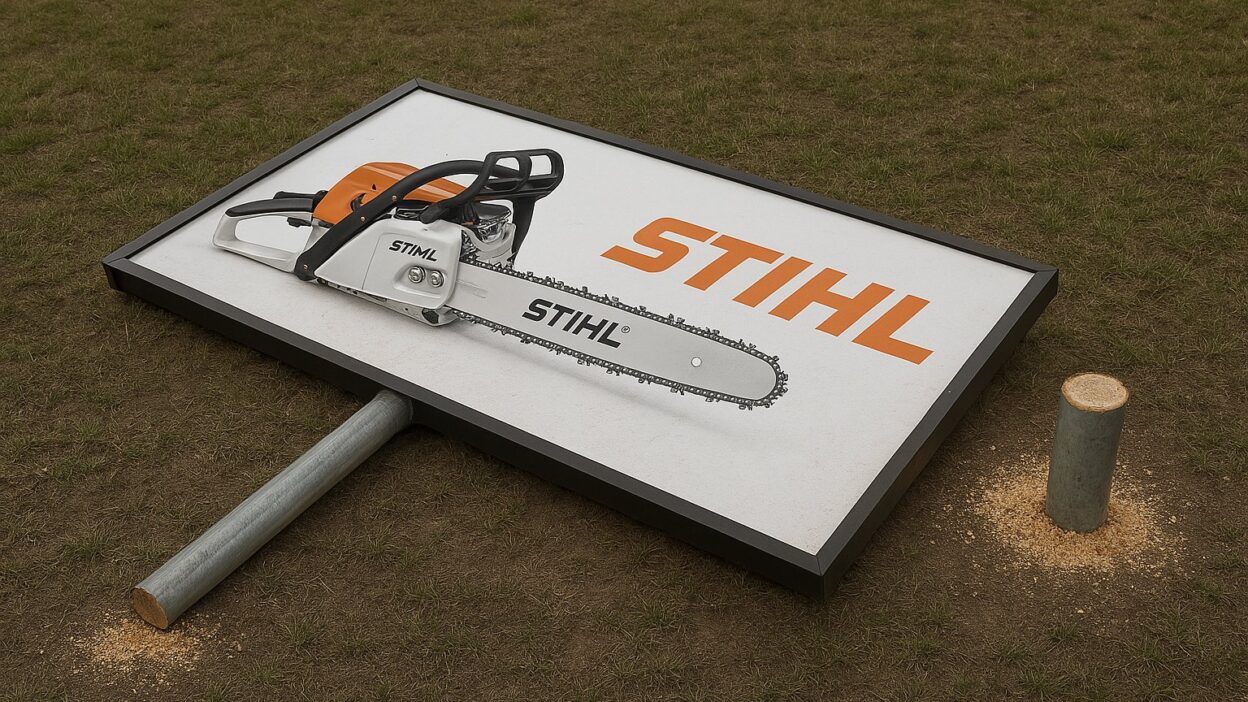In the fast-paced world of advertising, where creativity and speed are paramount, a new player has emerged to redefine the game: artificial intelligence. On March 26, 2025, a series of AI-generated advertisements surfaced on X, showcasing the capabilities of OpenAI’s GPT-4o model.
These ads, created for brands like BAND-AID, BIC, McDonald’s, and more, highlight how AI can produce visually stunning, conceptually rich campaigns in minutes—a process that traditionally takes hours or even days. This article explores these AI-crafted ads, analyzes their creativity, and examines the broader implications of AI in the advertising industry.
A Showcase of AI-Generated Ads
The collection of ads demonstrates the versatility of GPT-4o in crafting campaigns across diverse industries, from healthcare to fast food to technology. Each ad blends visual storytelling with clever messaging, proving that AI can rival human creativity. Let’s break down the ads in detail.
1. McDonald’s: “You Deserve a Break Today”
Set in a retro office environment reminiscent of the 1980s, this McDonald’s ad features a desk cluttered with the brand’s iconic items: fries, a burger, and a drink. The tagline, “You deserve a break today,” is a revival of McDonald’s classic slogan from the 1970s and ‘80s, evoking nostalgia while appealing to modern workers seeking a quick escape from their daily grind.
The vintage computer and green cubicle walls add a quirky, anachronistic charm, blending past and present to create a visually striking scene. This ad aligns with the growing trend of AI-generated commercials, as seen in McDonald’s Japan’s recent AI-driven campaign.
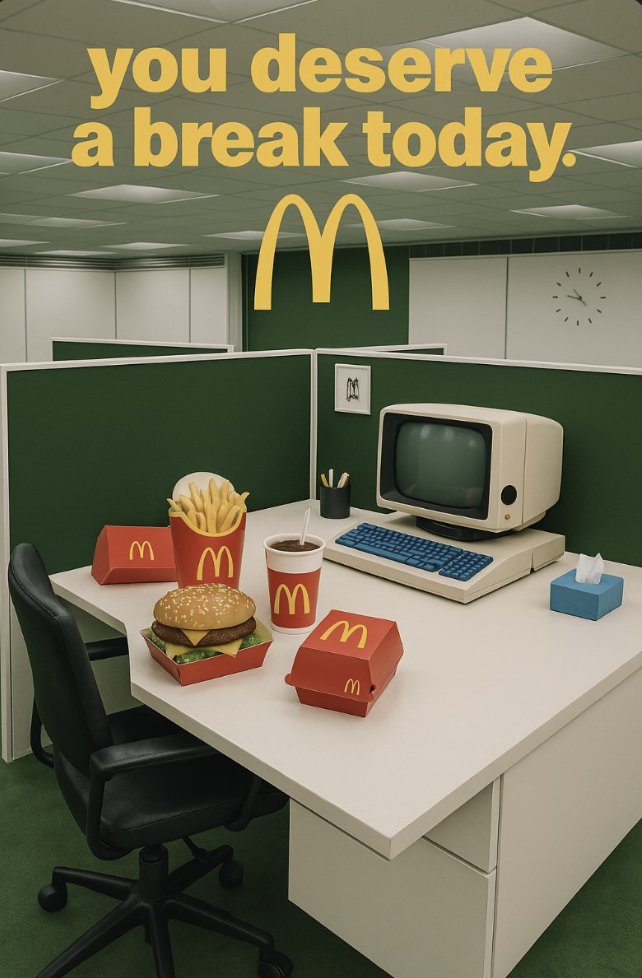
2. BIC: “Twisting Hair Since 1945”
This ad takes a lighthearted approach to BIC’s brand legacy. It shows the back of a person with their hair tied into a neat bun, secured with a blue BIC pen. The tagline, “Twisting hair since 1945,” humorously nods to a common habit—using a pen as a makeshift hair tie—while celebrating BIC’s founding year.
The minimalist design, with a plain background and a focus on the hair and pen, keeps the message playful and relatable. BIC, a company known for its disposable pens since 1945, has a history of imaginative advertising that encourages creativity, as highlighted in a web result from stephanieguydesign.com. This ad reinforces BIC’s image as an everyday tool that’s been part of people’s lives in unexpected ways for decades.
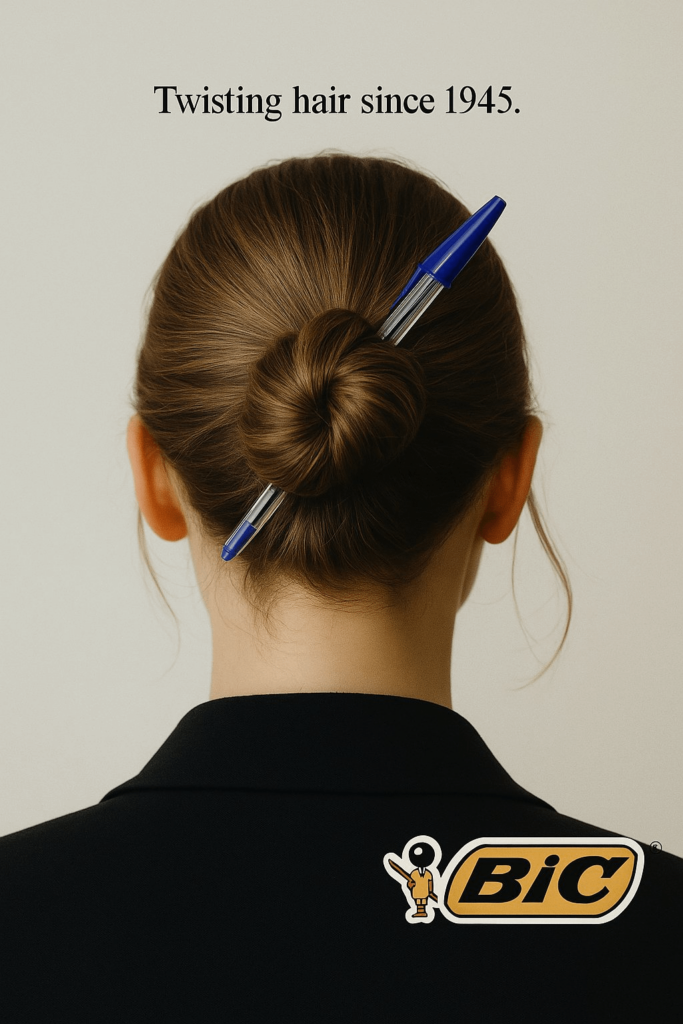
3. STIHL: A Bold Demonstration of Power
One of the additional ads features STIHL, a chainsaw manufacturer. The image shows a billboard lying on the ground, as if it has been cut down, with a STIHL chainsaw graphic on the billboard itself.
A metal pole that once held the billboard is sliced in half, with sawdust scattered around, symbolizing the chainsaw’s power and precision. The brand name “STIHL” in bold orange letters is the only text, making the visual impact the focal point. This ad humorously demonstrates the product’s effectiveness, appealing to professionals and DIY enthusiasts who need a reliable cutting tool.
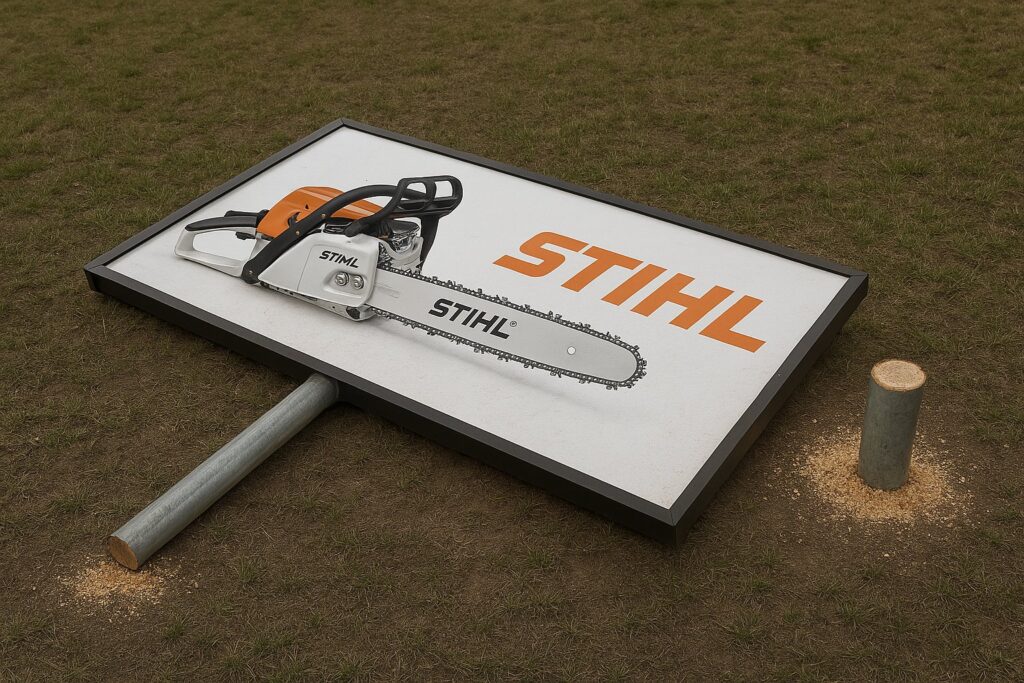
4. Opopop: “The Popcorn That Brings Joy Home”
This ad introduces Opopop, a popcorn brand with a birthday cake flavor. The packaging takes center stage, surrounded by annotations like “Flavor-Wrapped Kernels,” “Zero Artificial Colors,” and “Birthday Cake Flavor.” The tagline, “The popcorn that brings joy home,” emphasizes the product’s fun, celebratory vibe.
The pastel color scheme—pinks, yellows, and whites—enhances the playful tone, making the ad feel like a party in itself. This ad showcases AI’s ability to design product packaging and create a cohesive brand identity, complete with detailed annotations that highlight key selling points.
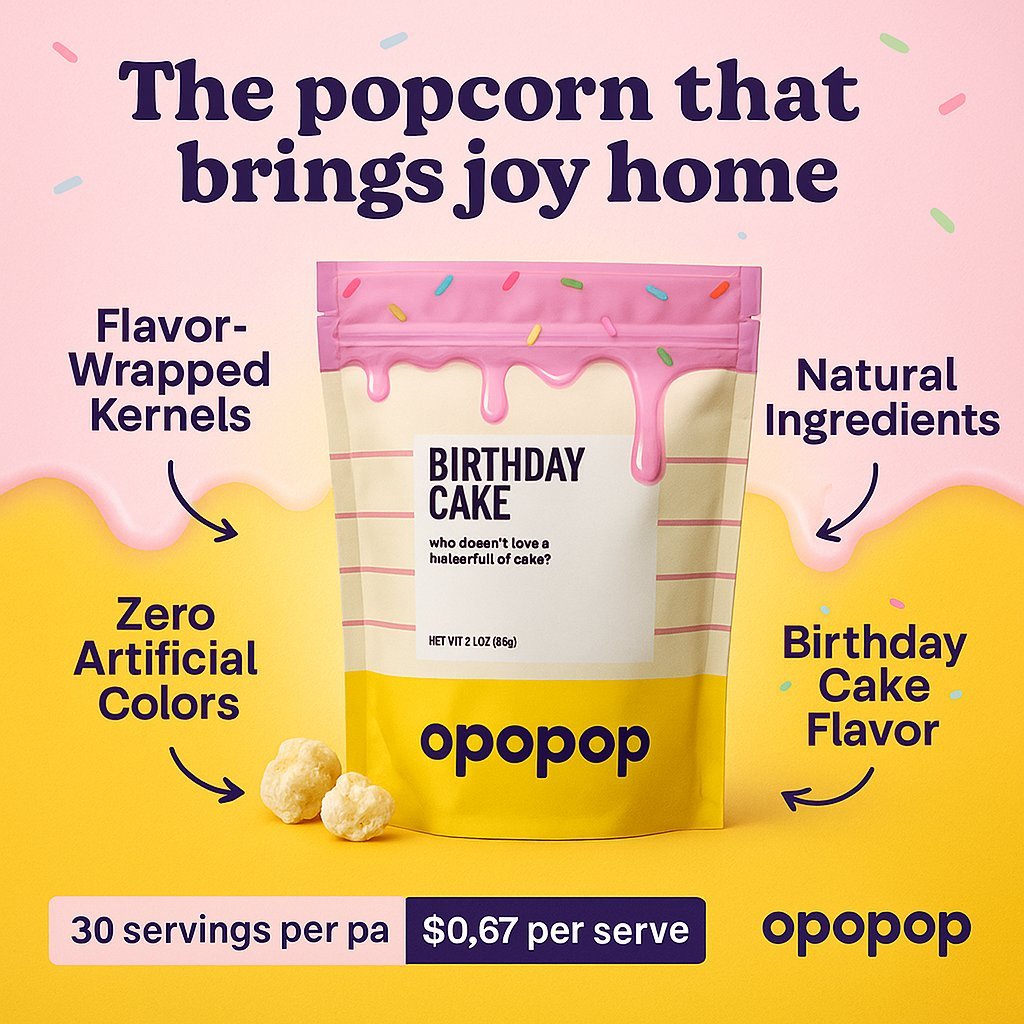
5. BAND-AID: “Healing the Music”
The first ad features a close-up of a hand playing an acoustic guitar, with BAND-AID bandages wrapped around the fingers. The tagline, “Healing the music,” is a poignant metaphor that speaks directly to musicians who often endure blisters or minor injuries from hours of practice. The warm, earthy tones of the image create a cozy, intimate atmosphere, while the sharp focus on the guitar strings emphasizes the act of playing.
For Johnson & Johnson’s BAND-AID brand, this ad extends the product’s core promise—protection and healing—into the creative realm, suggesting that BAND-AID helps artists keep creating. The concept resonates with the historical use of music for healing causes, such as the 1984 Band Aid initiative for Ethiopian famine relief, as noted in a Rolling Stone article.
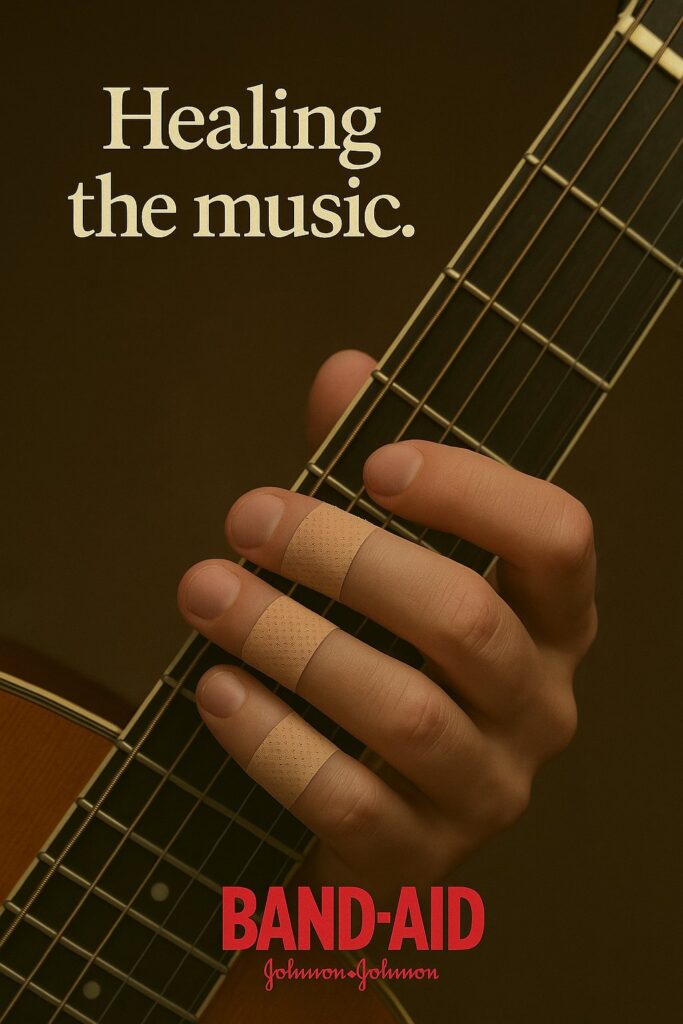
6. Base: “More Developers Deploy on Base”
Designed in the style of a 1980s tech ad, this advertisement for Base, a Layer-2 blockchain network, features a retro computer graphic and a bold headline: “More developers deploy on Base.” The copy highlights Base’s benefits—low fees, fast transactions, and robust security—positioning it as a top choice for developers.
The ad’s nostalgic design, with its grainy texture and muted blue-beige palette, appeals to tech enthusiasts who appreciate the history of computing while promoting a modern platform. This demonstrates AI’s ability to adapt to specific industries, creating targeted ads that resonate with niche audiences.
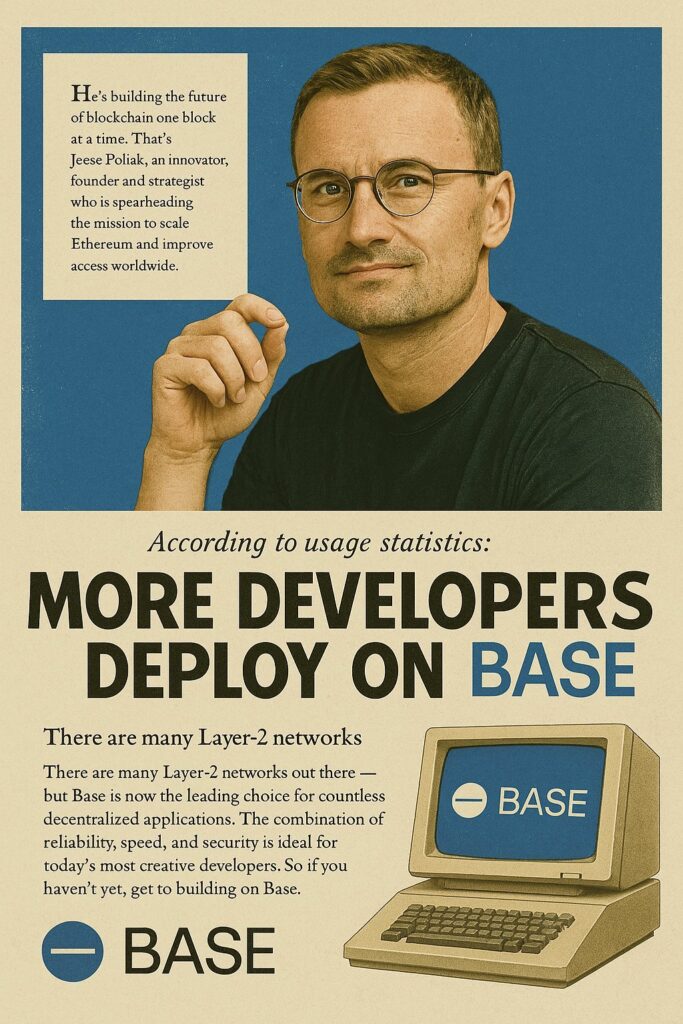
The Technology Behind the Ads: GPT-4o
These ads were created using GPT-4o, OpenAI’s latest multimodal AI model, which integrates text and image generation capabilities. According to a web result from favtutor.com, GPT-4o is now natively embedded in ChatGPT, allowing both free and paying users to generate images with unprecedented ease.
Unlike previous models, GPT-4o excels at rendering text within images—a common challenge for earlier AI image generators. This capability is evident in the ads, where taglines, logos, and product details are seamlessly integrated into the visuals.
What sets GPT-4o apart is its speed. Conceptualizing, designing, and editing an ad traditionally takes hours, if not days, involving multiple professionals like photographers, designers, and copywriters. GPT-4o can produce a polished ad in minutes, democratizing access to high-quality creative tools. This efficiency doesn’t compromise quality—each ad in the collection is visually compelling, with clear messaging and a distinct brand identity.
The Implications of AI in Advertising
The emergence of AI-generated advertising has far-reaching implications for the industry. Here are some key takeaways:
- Speed and Scalability: AI enables brands to create ads quickly, facilitating rapid experimentation and iteration. This is particularly valuable for campaigns that need to respond to trends or events in real time.
- Cost Efficiency: Traditional ad production often involves significant expenses, from hiring creative teams to renting studio space. AI reduces these costs, making high-quality advertising accessible to smaller brands and startups.
- Personalization: AI can analyze vast amounts of data to create ads tailored to specific audiences, as seen in McDonald’s Japan’s AI-generated commercial. This level of personalization can enhance engagement and conversion rates.
- Creativity and Innovation: GPT-4o’s ability to blend nostalgia (e.g., the Base ad’s retro style) with modern messaging (e.g., Opopop’s playful branding) showcases AI’s potential to push creative boundaries. The BAND-AID ad’s metaphor of “healing the music” is a prime example of AI’s ability to craft clever, emotionally resonant concepts.
However, the adoption of AI in advertising also raises questions. Will AI replace human creatives, or will it serve as a tool to enhance their work? While GPT-4o can generate impressive ads, the human touch—such as the cultural nuance in McDonald’s Japan’s campaign or the emotional depth in BIC’s nostalgic ad—remains crucial. Additionally, ethical concerns, such as the potential for AI to perpetuate biases or create misleading content, must be addressed as the technology becomes more widespread.
Conclusion
The collection of AI-generated ads on X is a testament to the transformative power of AI in advertising. From BAND-AID’s heartfelt “Healing the music” to Opopop’s whimsical popcorn ad, GPT-4o demonstrates its ability to create diverse, impactful campaigns that resonate with audiences.
As brands increasingly adopt AI tools like GPT-4o, the advertising landscape is poised for a creative revolution—one where speed, scalability, and innovation converge to redefine how we connect with consumers.
For now, the collaboration between human creativity and AI technology seems to be the winning formula. The X community’s engagement with these ads, including contributions like the STIHL and AdAgency.co campaigns, shows a collective excitement for AI’s potential.
Whether you’re a marketer, a designer, or a curious consumer, one thing is clear: AI-generated advertising is here to stay, and its possibilities are only just beginning to be explored.


